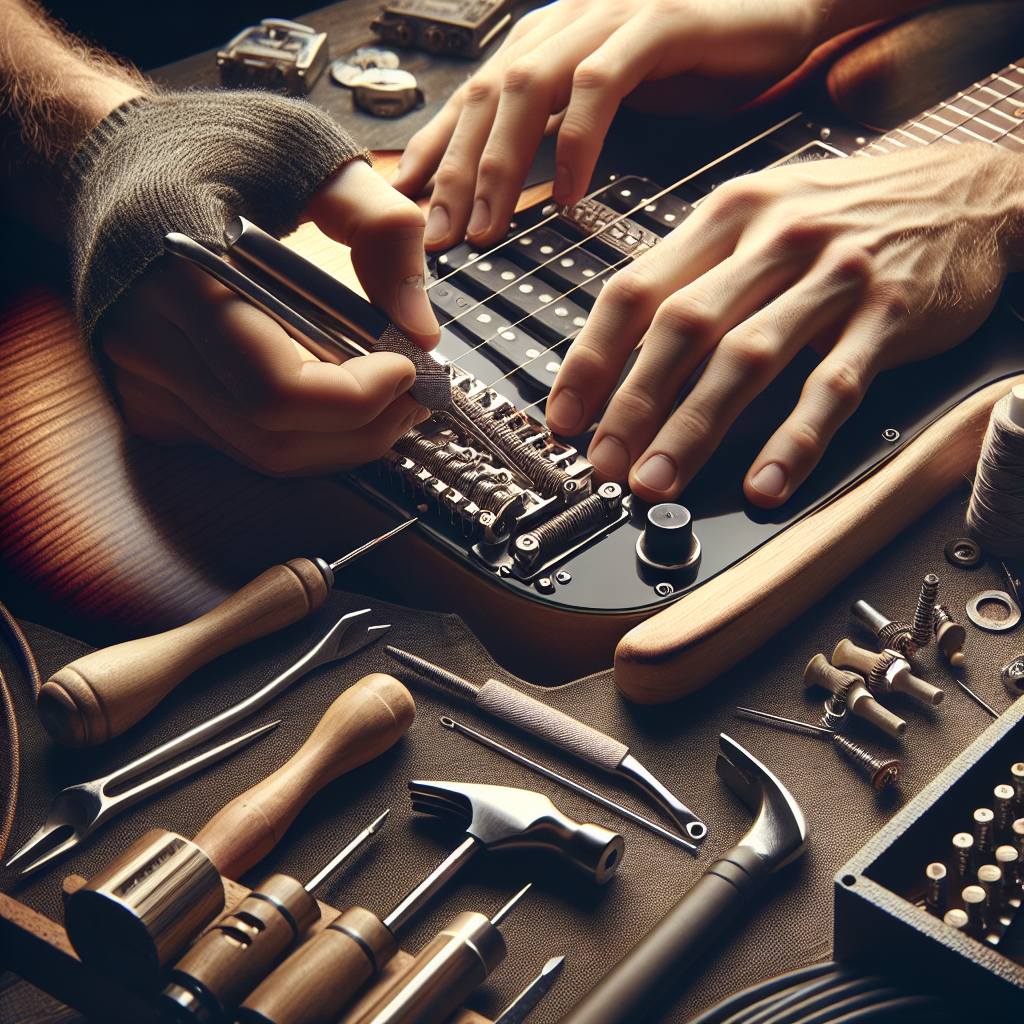
7 Must-Know Steps to Adjust Truss Rod Relief on Electric Guitars
Your electric guitar’s neck plays a critical role in its playability and sound. One of the main adjustments that can be made to ensure optimum performance is adjusting the truss rod relief. Mastering this process will help prevent buzzing, improve action, and enhance the overall sound of your instrument. But how do you go about it? Let’s dive into the essential steps for adjusting the truss rod relief on your electric guitar.
1. Understand the Truss Rod and Its Function
The truss rod is a metal rod that runs inside the neck of your electric guitar. Its primary function is to counteract the tension from the guitar strings and control the amount of bow in the neck. A well-adjusted truss rod ensures that your guitar neck remains straight or slightly bowed, depending on your playing style and string gauge.
2. Gather the Necessary Tools
Before starting, gather the essential tools you’ll need: an Allen wrench or hex key that matches the truss rod nut, a capo, and a feeler gauge or a ruler for measuring relief. Having the right tools makes the process smoother and ensures precision.
3. Measure the Current Neck Relief
To determine if your guitar needs adjustment, you must measure the current neck relief. Place a capo on the first fret, then use your finger to press down the string on the last fret of the neck. Use a feeler gauge or ruler to measure the gap between the bottom of the string and the top of the eighth fret. This measurement indicates the current relief. Typically, a relief of about 0.010-0.014 inches is ideal for most electric guitars.
4. Adjust the Truss Rod
If the neck relief is outside the optimal range, you will need to adjust the truss rod. To decrease relief (straighten the neck), turn the truss rod nut clockwise. Conversely, to increase relief (add more bow), turn the nut counterclockwise. Make small 1/8 to 1/4 turn adjustments and re-measure as you go. Remember, patience is key, as abrupt changes can damage your neck.
5. Recheck the Neck Relief
After making your adjustments, it’s crucial to re-measure the neck relief to see if it falls within the desired range. Use the same process described in step 3 to ensure consistency. If the measurement is still off, make slight further adjustments until you achieve the ideal relief.
6. Fine-Tune Your Guitar Setup
Once the truss rod relief is adjusted correctly, you might need to fine-tune other aspects of your guitar’s setup, such as string action and intonation. These elements work together to optimize playability and ensure the guitar sounds its best.
7. Seek Professional Help if Needed
If adjusting the truss rod seems daunting or if you’re unsure about the measurements and adjustments, it’s always a good idea to consult a professional guitar technician. They have the expertise and tools to ensure your guitar is set up perfectly.
FAQs
Q1: How can I tell if my electric guitar needs a truss rod adjustment?
A1: You’ll know you need a truss rod adjustment if your guitar neck looks overly bowed or back-bowed when viewed from the side, or if you experience excessive string buzzing or high action that affects playability.
Q2: How often should I check the truss rod relief?
A2: It’s a good practice to check the truss rod relief whenever you change strings, especially if you switch to a different gauge. Seasonal changes in temperature and humidity can also affect guitar necks, so regular checks are beneficial.
Q3: What happens if I over-tighten the truss rod?
A3: Over-tightening the truss rod can lead to irreversible damage to the neck and possibly cause it to crack. Always make small adjustments and recheck the relief to avoid this issue.
Q4: Do all electric guitars have truss rods?
A4: Most electric guitars have truss rods, but some budget or vintage models may not. It’s important to check the specifications of your guitar to know for sure.
Q5: Can adjusting the truss rod affect my guitar’s sound?
A5: Yes, adjusting the truss rod can influence the guitar’s sound by changing the action and playability, which can affect how the strings vibrate and project sound.
Q6: Is it better to adjust the truss rod with the strings on or off?
A6: It’s better to adjust the truss rod with the strings on and tuned to pitch. This ensures that you’re adjusting the relief under normal tension conditions.
Adjusting the truss rod relief on your electric guitar may seem daunting at first, but with careful attention, the right tools, and a bit of patience, you can execute this task seamlessly. Remember, a well-adjusted truss rod is foundational to your guitar’s performance, enhancing playability and sound.
For a comprehensive guide on guitar maintenance and adjustments, check out the advice from expert luthiers at Fender’s Truss Rod Adjustment Guide.